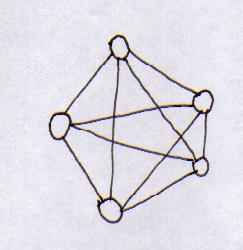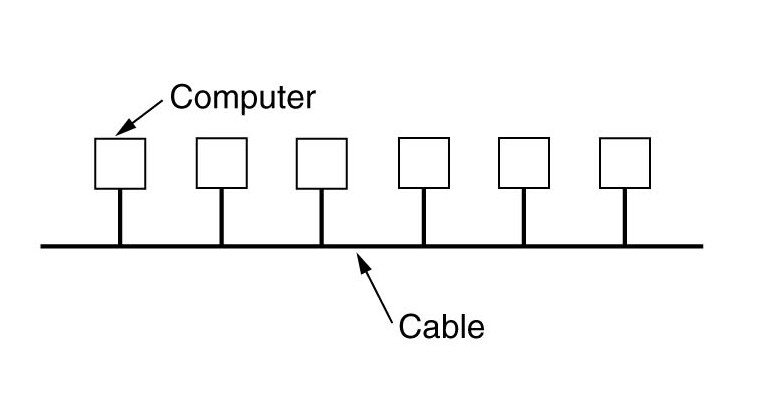
Only cost-practical in local network.
Example: Some military local networks.

The only practical large-scale topology. Grows as traffic grows. e.g. Internet. Once only 1 trans-Atlantic link. As traffic grows, more links added. Any site can be added by just 1 connection to any existing site. If traffic increases may add 2 connections to the rest of the Net, and so on. Variable-resolution.
Example: Internet.
See growth of Internet 1969-72.

Bus network.
Search for other images.

Better image of Bus network.
Router leads to Internet.
I have seen this image around but do not know who owns it.
If you know, tell me here.
All machines attached to one cable.
Only practical for local network.
Normally will have a
HQ router - the LAN's gateway to the outside world.
Example: Ethernet LAN.

Search for other images.

Better image of Ring network.
Router leads to Internet.
I have seen this image around but do not know who owns it.
If you know, tell me here.
Only practical for local network.
Example: Common local network topology.

Search for other images.

Better image of Star network.
Router leads to Internet.
I have seen this image around but do not know who owns it.
If you know, tell me here.
Only practical for local network.
Example: Common local network topology.

Could be built globally but no one would use it. Only practical for local, in-house, network.
Example: High-level organisation of multiple LANs can look a bit like this.